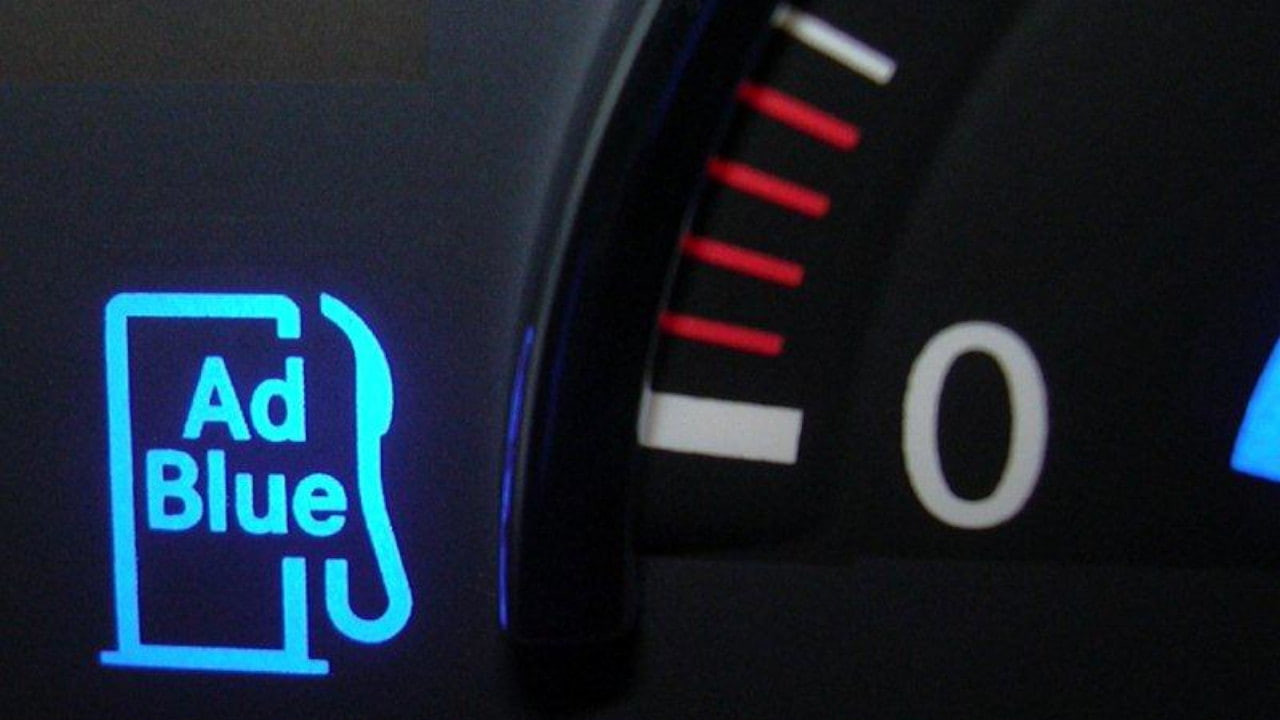
Mercedes Benz Adblue system plays a vital role in reducing emissions, ensuring your vehicle complies with environmental regulations. At CARDIAGTECH.NET, we understand the importance of maintaining this system for optimal performance and longevity. Discover everything you need to know about Mercedes Benz AdBlue, from understanding its function and benefits to troubleshooting common issues and where to find high-quality diagnostic tools. Keep your Mercedes Benz running smoothly and efficiently with our expert guidance. We offer top-notch solutions, including advanced diagnostic tools and comprehensive support, to ensure your vehicle stays in peak condition.
Contents
- 1. Understanding Mercedes Benz AdBlue
- 1.1. What is AdBlue and How Does It Work?
- 1.2. The Environmental Benefits of AdBlue
- 1.3. Which Mercedes Benz Models Use AdBlue?
- 2. Maintaining Your Mercedes Benz AdBlue System
- 2.1. Checking Your AdBlue Level
- 2.2. Understanding AdBlue Warning Lights
- 2.3. Refilling Your AdBlue Tank: A Step-by-Step Guide
- 2.4. Choosing the Right AdBlue Fluid
- 2.5. Storing AdBlue Properly
- 3. Troubleshooting Common Mercedes Benz AdBlue Issues
- 3.1. AdBlue Warning Light Stays On After Refilling
- 3.2. AdBlue System Malfunction
- 3.3. Diagnosing AdBlue System Problems with CARDIAGTECH.NET Tools
- 3.4. Common Error Codes and Their Solutions
- 3.5. When to Seek Professional Help
- 4. Benefits of Using CARDIAGTECH.NET Diagnostic Tools for Mercedes Benz AdBlue Systems
- 4.1. Accurate Diagnostics
- 4.2. Efficient Troubleshooting
- 4.3. User-Friendly Interface
- 4.4. Comprehensive Coverage
- 4.5. Cost-Effective Solution
- 5. Step-by-Step Guide to Resetting the AdBlue Warning Light with CARDIAGTECH.NET Tools
- 6. AdBlue System Components and Their Functions
- 6.1. AdBlue Tank
- 6.2. AdBlue Pump
- 6.3. AdBlue Injector
- 6.4. SCR Catalytic Converter
- 6.5. NOx Sensors
- 6.6. Reductant Control Module
- 7. Upgrading Your Diagnostic Capabilities with CARDIAGTECH.NET
- 7.1. Advanced Diagnostic Tools
- 7.2. Software Updates
- 7.3. Training and Support
- 8. Legal and Environmental Compliance
- 8.1. AdBlue Regulations
- 8.2. Avoiding Fines and Penalties
- 8.3. Contributing to a Cleaner Environment
- 9. The Future of AdBlue Technology
- 9.1. Innovations in AdBlue Systems
- 9.2. Integration with Electric Vehicles
- 9.3. The Role of AdBlue in Sustainable Transportation
- 10. Frequently Asked Questions (FAQs) About Mercedes Benz AdBlue
1. Understanding Mercedes Benz AdBlue
AdBlue, also known as Diesel Exhaust Fluid (DEF), is a vital component in modern Mercedes Benz diesel vehicles, helping to reduce harmful emissions. This colorless, non-toxic liquid is stored in a separate tank and injected into the exhaust system to break down nitrogen oxides (NOx) into harmless nitrogen and water. Understanding the AdBlue system ensures your Mercedes Benz complies with environmental regulations and maintains optimal performance.
1.1. What is AdBlue and How Does It Work?
AdBlue is a solution of urea and deionized water, typically containing about 32.5% urea. It works through a process called Selective Catalytic Reduction (SCR), where it is injected into the exhaust stream. The heat from the exhaust causes the urea to decompose into ammonia, which then reacts with NOx in the catalytic converter to produce nitrogen and water. This process significantly reduces the amount of harmful pollutants released into the atmosphere.
1.2. The Environmental Benefits of AdBlue
Using AdBlue significantly reduces NOx emissions, contributing to cleaner air and a healthier environment. NOx gases are major contributors to smog and acid rain, and reducing them helps improve air quality, especially in urban areas. By using AdBlue, Mercedes Benz vehicles meet stringent emission standards set by regulatory bodies worldwide.
1.3. Which Mercedes Benz Models Use AdBlue?
Most Mercedes Benz diesel models manufactured after 2015 are equipped with AdBlue systems. These include popular models like the C-Class, E-Class, S-Class, GLE, and GLS. Check your vehicle’s specifications or owner’s manual to confirm whether your model uses AdBlue.
 Silver Mercedes-Benz C-Class Side
Silver Mercedes-Benz C-Class Side
2. Maintaining Your Mercedes Benz AdBlue System
Proper maintenance of your Mercedes Benz AdBlue system is essential for ensuring its effectiveness and preventing costly repairs. Regularly checking fluid levels, addressing warning lights, and using high-quality AdBlue fluid are key to maintaining a healthy system.
2.1. Checking Your AdBlue Level
Most Mercedes Benz models provide a way to check the AdBlue level through the vehicle’s instrument cluster. Navigate to the “Service” menu or a dedicated “AdBlue” section to view the current level. A warning light will also illuminate on the dashboard when the AdBlue level is low, typically when there are around 1,500 to 1,650 miles remaining.
2.2. Understanding AdBlue Warning Lights
AdBlue warning lights indicate the level of fluid in the tank. A yellow warning light means the level is low and needs to be refilled soon. A red warning light indicates critically low levels, requiring immediate attention. Ignoring these warnings can lead to performance issues and potential engine damage.
 AdBlue Warning Light
AdBlue Warning Light
2.3. Refilling Your AdBlue Tank: A Step-by-Step Guide
Refilling the AdBlue tank is a straightforward process. Here’s how to do it:
- Purchase the Correct AdBlue Fluid: Ensure you buy AdBlue fluid that meets the ISO 22241 standard.
- Locate the AdBlue Tank: The AdBlue tank cap is usually located next to the fuel filler cap or in the trunk. Consult your owner’s manual for the exact location.
- Open the Cap: Carefully open the AdBlue tank cap.
- Refill the Tank: Use a funnel or a special AdBlue refill nozzle to pour the fluid into the tank. Avoid overfilling.
- Close the Cap: Securely close the AdBlue tank cap.
- Reset the Warning Light: Turn on the ignition without starting the engine. The warning light should reset after a few minutes. If it doesn’t, you may need to follow specific reset procedures outlined in your owner’s manual or use a diagnostic tool from CARDIAGTECH.NET.
2.4. Choosing the Right AdBlue Fluid
It’s crucial to use AdBlue fluid that meets the ISO 22241 standard to ensure proper performance and prevent damage to the SCR system. High-quality AdBlue fluid is available at most auto parts stores, gas stations, and Mercedes Benz dealerships. Avoid using generic or non-certified fluids.
2.5. Storing AdBlue Properly
Store AdBlue in a cool, dry place away from direct sunlight. The fluid has a shelf life of about one year when stored properly. Ensure the container is tightly sealed to prevent contamination.
3. Troubleshooting Common Mercedes Benz AdBlue Issues
Even with proper maintenance, issues can arise with the Mercedes Benz AdBlue system. Recognizing common problems and knowing how to address them can save you time and money.
3.1. AdBlue Warning Light Stays On After Refilling
If the AdBlue warning light remains on after refilling the tank, try the following steps:
- Ensure the Tank is Properly Filled: Double-check that you have filled the tank to the recommended level.
- Restart the Engine: Sometimes, simply restarting the engine will reset the system.
- Drive for a Short Distance: The system may need a few miles to recognize the new fluid level.
- Check the Cap: Make sure the AdBlue tank cap is securely closed.
- Use a Diagnostic Tool: If the light persists, use a diagnostic tool from CARDIAGTECH.NET to reset the system.
3.2. AdBlue System Malfunction
An AdBlue system malfunction can manifest in various ways, including warning lights, error messages, and performance issues. Common causes include faulty sensors, clogged injectors, and issues with the SCR catalytic converter.
3.3. Diagnosing AdBlue System Problems with CARDIAGTECH.NET Tools
CARDIAGTECH.NET offers a range of diagnostic tools specifically designed to diagnose and troubleshoot AdBlue system problems. These tools can read error codes, monitor system parameters, and perform reset functions. Here’s how to use them:
- Connect the Tool: Plug the diagnostic tool into the OBD-II port of your Mercedes Benz.
- Read Error Codes: Use the tool to read any stored error codes related to the AdBlue system.
- Interpret the Codes: Consult the tool’s manual or a reliable online resource to interpret the error codes.
- Monitor System Parameters: Check parameters such as AdBlue level, injector performance, and sensor readings.
- Perform Reset Functions: Use the tool to reset the AdBlue system after addressing the underlying issue.
 Fuel Pumps
Fuel Pumps
3.4. Common Error Codes and Their Solutions
Here are some common AdBlue error codes and their potential solutions:
| Error Code | Description | Possible Solutions |
|---|---|---|
| P20E8 | Reductant Supply Pressure Too Low | Check AdBlue pump, lines, and filter for blockages or leaks. |
| P20EE | SCR NOx Catalyst Efficiency Below Threshold | Inspect SCR catalytic converter for damage or contamination. Replace if necessary. |
| P204F | Reductant System Performance | Check AdBlue injector for proper operation. Clean or replace if needed. |
| P203F | Reductant Level Too Low | Refill AdBlue tank. Check for leaks in the system. |
| U010E | Lost Communication with Reductant Control Module | Check wiring and connections to the reductant control module. Replace module if necessary. |
3.5. When to Seek Professional Help
If you are unable to diagnose or resolve AdBlue system issues with a diagnostic tool, it’s best to seek professional help. A qualified Mercedes Benz technician can accurately diagnose the problem and perform the necessary repairs.
4. Benefits of Using CARDIAGTECH.NET Diagnostic Tools for Mercedes Benz AdBlue Systems
CARDIAGTECH.NET offers a comprehensive range of diagnostic tools tailored for Mercedes Benz AdBlue systems. Our tools provide accurate diagnostics, efficient troubleshooting, and user-friendly interfaces.
4.1. Accurate Diagnostics
Our diagnostic tools provide precise and reliable readings, helping you identify the root cause of AdBlue system issues quickly. This accuracy minimizes downtime and ensures effective repairs.
4.2. Efficient Troubleshooting
With advanced features like error code reading, system parameter monitoring, and reset functions, our tools streamline the troubleshooting process. You can efficiently diagnose and resolve issues, saving time and money.
4.3. User-Friendly Interface
CARDIAGTECH.NET diagnostic tools feature intuitive interfaces that are easy to navigate, even for users with limited experience. Clear instructions and helpful prompts guide you through the diagnostic process.
4.4. Comprehensive Coverage
Our tools support a wide range of Mercedes Benz models, ensuring comprehensive coverage for all your diagnostic needs. Whether you own a C-Class, E-Class, or SUV, our tools can help you maintain your AdBlue system.
4.5. Cost-Effective Solution
Investing in a CARDIAGTECH.NET diagnostic tool can save you money in the long run by allowing you to diagnose and resolve issues yourself, avoiding costly trips to the mechanic.
 Diesel and Adblue Fuel Caps
Diesel and Adblue Fuel Caps
5. Step-by-Step Guide to Resetting the AdBlue Warning Light with CARDIAGTECH.NET Tools
Resetting the AdBlue warning light after refilling the tank or addressing an issue is a crucial step. Here’s a step-by-step guide to using CARDIAGTECH.NET tools for this purpose:
- Connect the Diagnostic Tool: Plug the CARDIAGTECH.NET diagnostic tool into the OBD-II port of your Mercedes Benz.
- Turn on the Ignition: Turn on the ignition without starting the engine.
- Navigate to the AdBlue Reset Function: Use the tool’s interface to navigate to the “AdBlue Reset” or “Service Reset” function. This may be located in the “Service” menu or a dedicated “AdBlue” section.
- Follow the On-Screen Instructions: The tool will provide on-screen instructions to guide you through the reset process. Follow these instructions carefully.
- Confirm the Reset: Once the reset is complete, the tool will display a confirmation message.
- Turn Off the Ignition: Turn off the ignition and remove the diagnostic tool.
- Start the Engine: Start the engine to verify that the AdBlue warning light has been reset.
Note: Always refer to the CARDIAGTECH.NET tool’s user manual for specific instructions and safety precautions.
6. AdBlue System Components and Their Functions
Understanding the components of the AdBlue system and their functions can help you better diagnose and troubleshoot issues.
6.1. AdBlue Tank
The AdBlue tank stores the Diesel Exhaust Fluid (DEF). It is typically located near the fuel tank or in the trunk. The tank is equipped with a level sensor to monitor the amount of fluid remaining.
6.2. AdBlue Pump
The AdBlue pump delivers the fluid from the tank to the injector. It is responsible for maintaining the correct pressure and flow rate.
6.3. AdBlue Injector
The AdBlue injector sprays the fluid into the exhaust stream. It is controlled by the engine control unit (ECU) to ensure precise injection timing and quantity.
6.4. SCR Catalytic Converter
The SCR catalytic converter is where the chemical reaction between AdBlue and NOx takes place. It contains a catalyst that promotes the conversion of harmful pollutants into nitrogen and water.
6.5. NOx Sensors
NOx sensors monitor the levels of nitrogen oxides in the exhaust stream. They provide feedback to the ECU, allowing it to adjust the AdBlue injection rate for optimal performance.
6.6. Reductant Control Module
The reductant control module manages the AdBlue system, including the pump, injector, and sensors. It communicates with the ECU to ensure proper operation.
7. Upgrading Your Diagnostic Capabilities with CARDIAGTECH.NET
Investing in advanced diagnostic tools from CARDIAGTECH.NET can significantly enhance your ability to maintain and repair Mercedes Benz AdBlue systems.
7.1. Advanced Diagnostic Tools
Our advanced diagnostic tools offer features such as real-time data streaming, component testing, and bi-directional controls. These capabilities allow you to perform in-depth diagnostics and troubleshoot complex issues.
7.2. Software Updates
CARDIAGTECH.NET provides regular software updates to ensure your diagnostic tools are compatible with the latest Mercedes Benz models and software versions. These updates include new features, enhanced functionality, and bug fixes.
7.3. Training and Support
We offer comprehensive training and support to help you get the most out of your diagnostic tools. Our resources include user manuals, video tutorials, and technical support from experienced professionals.
8. Legal and Environmental Compliance
Operating your Mercedes Benz AdBlue system in compliance with legal and environmental regulations is essential.
8.1. AdBlue Regulations
Many countries have regulations regarding the use of AdBlue in diesel vehicles. These regulations are designed to reduce NOx emissions and improve air quality. Failure to comply with these regulations can result in fines and penalties.
8.2. Avoiding Fines and Penalties
To avoid fines and penalties, ensure your Mercedes Benz AdBlue system is functioning correctly and that you are using AdBlue fluid that meets the required standards. Regularly check the system for issues and address them promptly.
8.3. Contributing to a Cleaner Environment
By maintaining your AdBlue system and using high-quality fluid, you are contributing to a cleaner environment. Reducing NOx emissions helps improve air quality and protect public health.
9. The Future of AdBlue Technology
AdBlue technology is continuously evolving, with ongoing research and development aimed at improving its efficiency and effectiveness.
9.1. Innovations in AdBlue Systems
Innovations in AdBlue systems include more precise injection control, improved catalyst materials, and advanced monitoring technologies. These advancements are helping to further reduce NOx emissions and improve fuel efficiency.
9.2. Integration with Electric Vehicles
As electric vehicles become more prevalent, AdBlue technology may be integrated with hybrid and electric powertrains to further reduce emissions. This integration could involve using AdBlue to treat emissions from range extenders or other auxiliary power units.
9.3. The Role of AdBlue in Sustainable Transportation
AdBlue will continue to play a vital role in sustainable transportation by reducing emissions from diesel vehicles. As technology evolves, AdBlue systems will become even more efficient and effective, contributing to a cleaner and healthier environment.
10. Frequently Asked Questions (FAQs) About Mercedes Benz AdBlue
-
What is AdBlue?
- AdBlue is a non-toxic fluid used in diesel vehicles to reduce nitrogen oxide (NOx) emissions. It’s a solution of urea and deionized water.
-
How does AdBlue work?
- AdBlue is injected into the exhaust system, where it reacts with NOx in the catalytic converter to produce harmless nitrogen and water.
-
Which Mercedes Benz models use AdBlue?
- Most Mercedes Benz diesel models manufactured after 2015 are equipped with AdBlue systems.
-
How do I check my AdBlue level?
- You can check the AdBlue level through the vehicle’s instrument cluster or by looking for a warning light on the dashboard.
-
What happens if I run out of AdBlue?
- If you run out of AdBlue, your vehicle’s performance may be limited, and it may eventually stop running to prevent excessive emissions.
-
Where can I buy AdBlue?
- AdBlue is available at most auto parts stores, gas stations, and Mercedes Benz dealerships.
-
How do I refill my AdBlue tank?
- Locate the AdBlue tank, open the cap, and pour the fluid into the tank using a funnel or special nozzle.
-
What do I do if the AdBlue warning light stays on after refilling?
- Ensure the tank is properly filled, restart the engine, and drive for a short distance. If the light persists, use a diagnostic tool to reset the system.
-
Can I use any type of AdBlue fluid?
- It’s crucial to use AdBlue fluid that meets the ISO 22241 standard to ensure proper performance and prevent damage to the SCR system.
-
How often should I refill my AdBlue tank?
- The frequency of refills depends on your driving habits and the size of your AdBlue tank. Typically, you may need to refill every few thousand miles.
Maintaining your Mercedes Benz AdBlue system is crucial for optimal performance, environmental compliance, and longevity. CARDIAGTECH.NET offers a comprehensive range of diagnostic tools and resources to help you diagnose and resolve AdBlue system issues efficiently. From accurate diagnostics to user-friendly interfaces, our tools are designed to empower you to keep your Mercedes Benz running smoothly.
Don’t let AdBlue system problems slow you down. Contact CARDIAGTECH.NET today at 276 Reock St, City of Orange, NJ 07050, United States, or reach out via WhatsApp at +1 (641) 206-8880. Visit our website at CARDIAGTECH.NET to explore our wide selection of diagnostic tools and discover how we can help you maintain your Mercedes Benz AdBlue system. Ensure your vehicle meets environmental standards and enjoys peak performance with CARDIAGTECH.NET – your trusted partner in automotive diagnostics.



